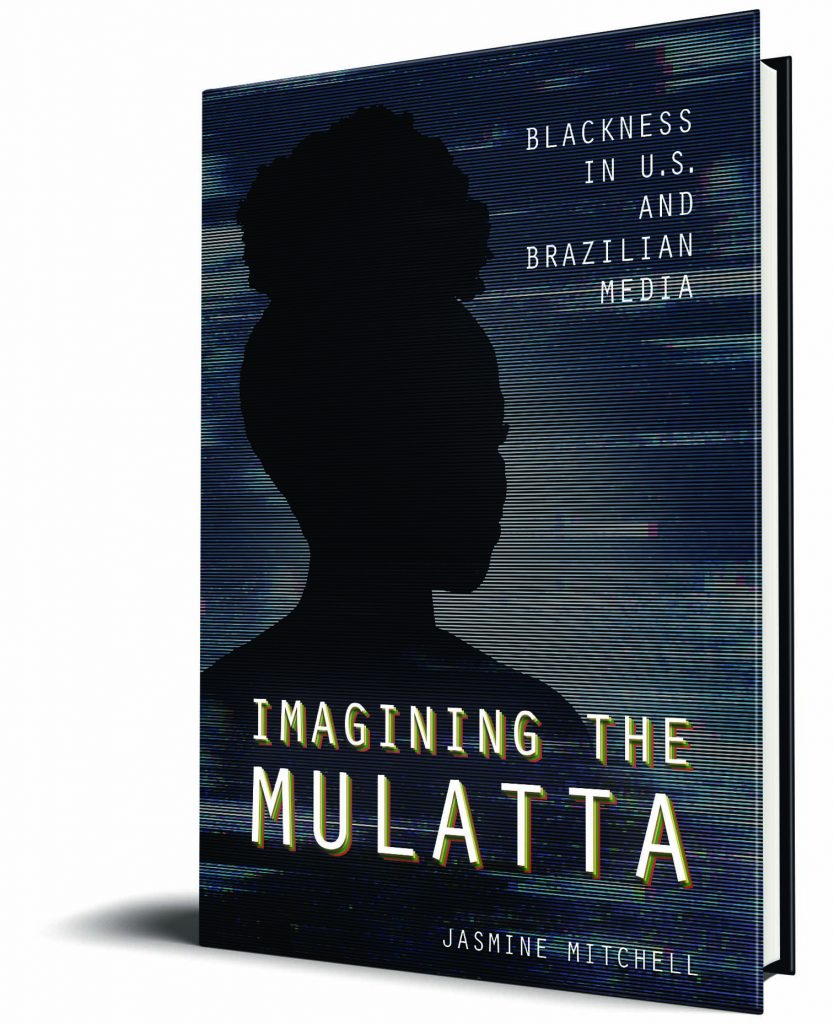
Q: Why did you decide to write this book?
“You look exotic, what are you?” “Where is your family from? I mean what is your race?” These questions have been posed to me over and over again. While they may sound like queries of innocent curiosity, they actually reveal anxieties, fascinations, and fetishizations of race, gender, and sexuality. I, myself, as a mixed Black woman in the United States has had to navigate with, and try to navigate as, a mixed Black woman and that journey was the genesis of this book. Growing up in the United States, I rarely saw interracial families or anyone really that looked like me on television. But, in the late 1990s and early 2000s, there was an emerging political and media discourse casting mixed-race children as a new people that were going to save the future from racism.
When I arrived in Brazil for the first time on New Year’s Eve 2001, I had already bought into the Brazil as racial paradise myth. I naively thought to myself, “Wow, I will fit in here! There are so many Black people that look just like my family.” Yet, this myth soon shattered for me as racial inequities were hard to ignore and women who looked like me were intensely sexually objectified. I hardly saw anyone who looked like me in universities or on television. When I began working in Brazil in 2003, fierce debates raged as Brazilian universities began implementing affirmative action for the first time. Opposition often centered on questions of who would be considered Black and if affirmative action was U.S. imported racism. How did the United States and Brazil manage the promises of racial paradises of mixed race peoples with the realities of racism? In this book, I wanted to use a broader frame than just looking at the United States and Brazil in isolation. I posed questions considering what are the key links between the United States and Brazil? These links revolved around managing Blackness through racial mixing alongside grappling with continuing legacies of slavery.
Q: Who were your biggest influences?
I am indebted to so many scholars, activists, and media experts who have shaped my thinking about race and gender in the Americas. At first, I wasn’t sure if writing about mixed-race or popular media was feasible. Mary Beltrán, who mentored me and saw the potential in this book manuscript, has written such compelling work on mixed-race, pop culture, and gender in the U.S. Ralina Joseph and Camilla Fojas have also looked at mixed race, national identities, and popular media in inspiring and accessible ways. I want foremost for anyone to be able to find Imagining the Mulatta relevant to their lives.
Kia Caldwell, Sueli Carneiro and Saidiya Hartman are critical influences because of their work centering Black women and the legacies of slavery and resistance. These narratives are too often excluded or obscured.The work of scholars like Micol Seigel and Ann Stoler guided me through thinking through the interconnections between nations in terms of racial thought, managing racial anxieties, and forms of resistance. I am also very much influenced by the combined approaches of scholars like Stuart Hall and bell hooks on how to read mass media texts critically. And of course, Joel Zito Araújo, a pioneer of writing and creating work centering on Afro-Brazilians in media.
Q: What is the most interesting discovery you made while researching and writing your book?
With a very U.S. centric perspective, I originally thought I would focus on Brazilian films while conducting initial research on race and popular media. I wasn’t making much headway as I had failed to grasp that unlike in the Hollywood-centric U.S., Brazilian films did not have the same range and pull into the national consciousness. I had in my mind that telenovelas weren’t taken seriously. But, then I noted every night, Brazil, across regions, classes, races, and genders comes to a standstill for telenovelas, serial melodramas. I realized these were nothing like U.S. soap operas. Far more than any one medium in U.S. culture, they are critical cultural sites. After the suggestion of studying telenovelas, televisual serial melodramas, Cristina Mungioli of the Universidade de São Paulo helped introduce me to the world of telenovelas along with Maria Immacolota Lopes at the Centro dos Estudos da Telenovela. Almost immediately the role that telenovelas play in conditioning how Brazilian and transnational audiences read race was clear and I changed my focus.

Q: What myths do you hope your book will dispel or what do you hope your book will help readers unlearn?
Mixed race people will not save us from racism. I hear this romanticized refrain over and over again across the Americas. There is this lingering idea that the very presence of mixed-race people means racism cannot exist. Somehow interracial sexual relations are presented as the salve to racism, instead of helping to perpetuate racism. Race becomes some remnant of the past while deemphasizing a long history of racial mixing. Colonialism and slavery-combined with lots of nonconsensual interracial sex-fueled racial hierarchies rather than dismantle it. In the United States, mixed-race people are presented as the big hope towards racial progress and the elimination of race itself. The images of racial mixing also tend to project the U.S. as gradually becoming less Black. The U.S. should look to Brazil and much of Latin America to see how this touting of racial mixing masks racism.
Brazilian myths of racial democracy based on racial mixing are also just that-myths. Brazil’s national mythmaking projects the idea of a unified, racially mixed nation that is on its way to gradual whiteness. Beginning in the 1930s, Gilberto Freyre, a noted anthropologist, and the Brazilian state, propagated the myth of racial democracy based upon racial mixing. This national lore rested on the idea that all Brazilians could claim African, European, and Indigenous ancestry, and thus, racism in Brazil did not exist. The myth of racial democracy boasted Brazilian racial harmony but masked deep racial inequalities and furthered racial hierarchies. This myth also romanticizes colonialization and slavery and repackages it as a sexual fantasy of white men and nonwhite women.
The eroticized symbols of the U.S. mulatta and Brazilian mulata- women of African and European descent- facilitate these myths of racial mixing. The image of the Brazilian mulata (e.g. Carnival, samba shows, etc.) functioned as the mythic proof of racial harmony for both internal and external consumption. Brazil sells the world and itself an idea of a racial sexual paradise. There is a saying in Brazil, “Branca para casar, mulata para fornicar, negra para trabalhar (white women for marriage, mulata women for sex, blackwomen for work).” This saying really crystallizes the valuing of white femininity and the devaluation of Black womanhood.
Like Brazil, the U.S. also harbors a an exoticized sexual fetishization of mixed Black women. These erotic myths are not brand new-again just repackaged from centuries of myths of Black sexual availability stemming from slavery.
I hope that my book can dispel some of these myths through the variety of media texts used. I tell my students it’s never “just a movie.” Rather we are forming ideas around race and gender, around who is valued and who is not. Media texts-films, television shows, music videos, etc-circulate these myths of racial mixing in gendered and sexualized terms.
Q: What is the most important idea you hope readers will take away from your book?
I hope that readers can grasp the variant ways of managing Blackness to uphold racial hierarchies. It is seductive to hope for racial progress, racial democracy without actually doing the work to dismantle systems of oppression mired in pervasive racial and gender inequalities. Mixed-race women of African and European descent are often harnessed in popular media as a tool to uphold white supremacy and discipline people of African descent to uphold state policies of antiblackness. The United States and Brazil are often thought of as nations that are so different from each other. Mass media emerges here as a way to disseminate these simultaneous narratives of racial utopias and the containing of Black bodies. Rather, these nations are entwined within legacies of colonization and slavery and deep racial anxieties to uphold white patriarchy. These overlapping racial ideologies that are only visible when Brazilian and US cultural productions are read alongside one another.
Q: What do you like to read/watch/or listen to for fun?
With small kids, time is limited and tv is easier to watch in bits and pieces. But, I do love the moment of television that we are in right now. For Brazilian television-of course telenovelas. Netflix has a huge market in Brazil now and there is lots of interesting television with much more diverse casting. Dystopian in this moment, but the Brazilian series 3 % raises a lot of interesting ethical questions. There is so much amazing Black television in the U.S. I am addicted to Queen Sugar. I also like Insecure and Black-ish for comedies. Again dystopian in 2020, but I think The Leftovers has some of the most poignant interesting writing in television ever and fully fleshed out characters. I also like Westworld for reimagining resistance and oppression. As a New Yorker, The Marvelous Mrs. Maisel is great and it is refreshing to see a female-driven comedic series. And that’s just for tv! Film would be a whole other interview.
in African American Studies, of Illinois University Press Blog.



